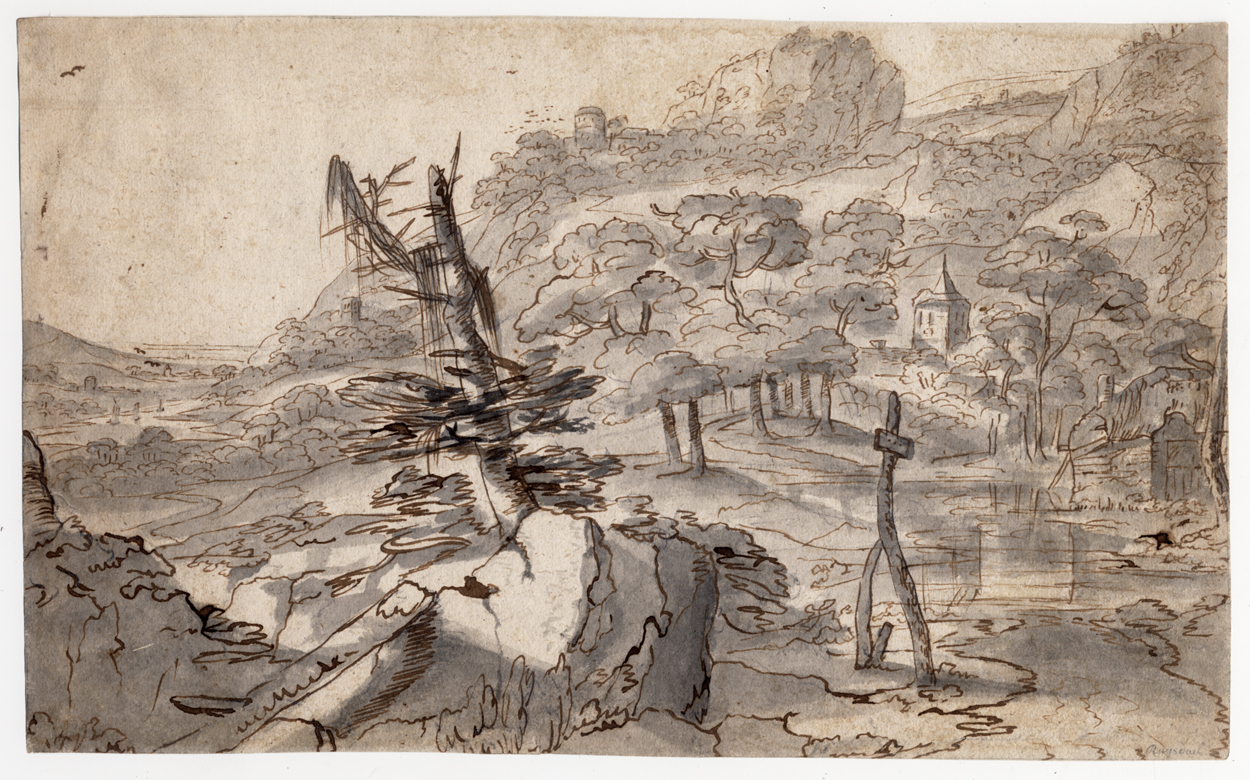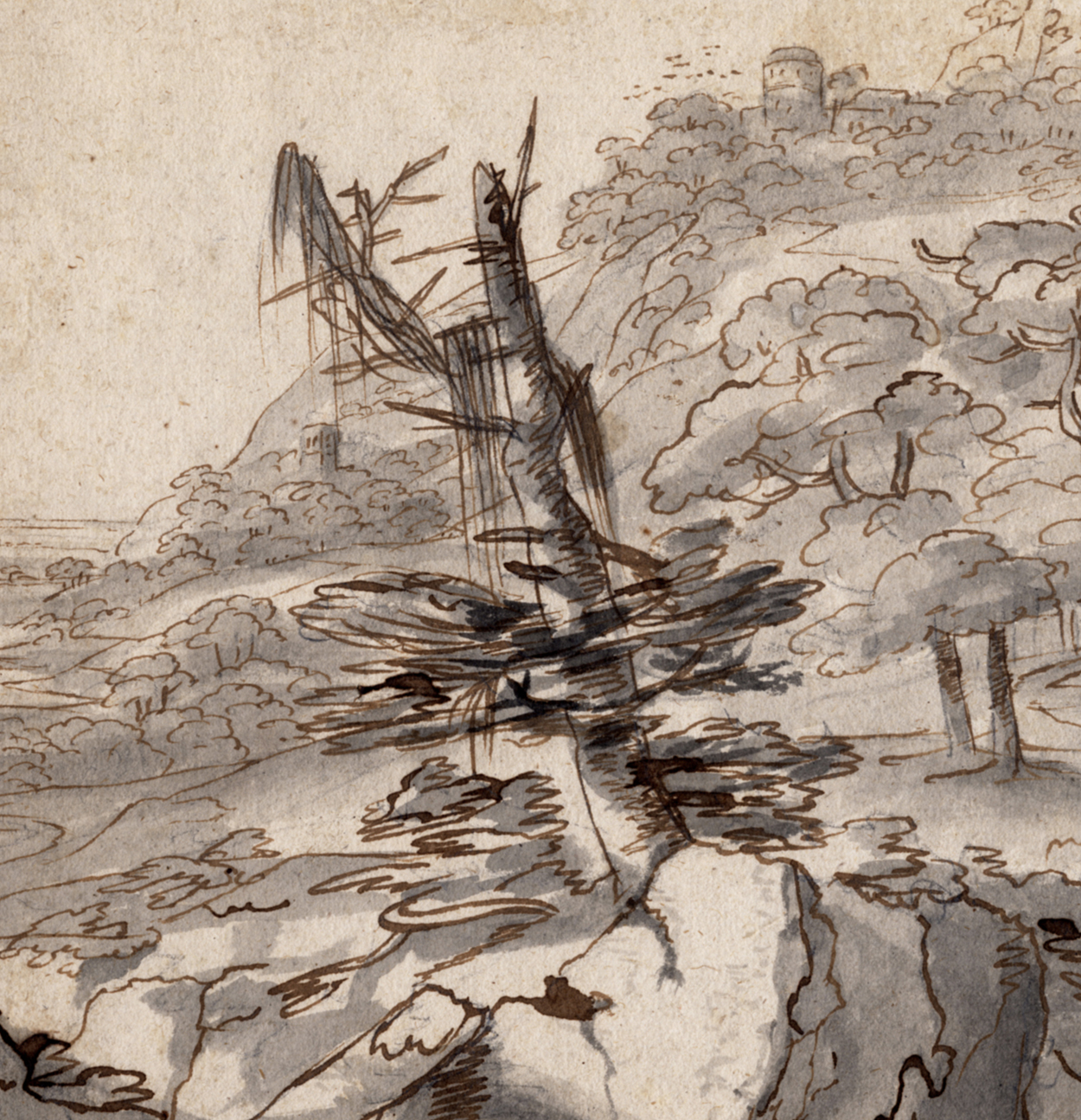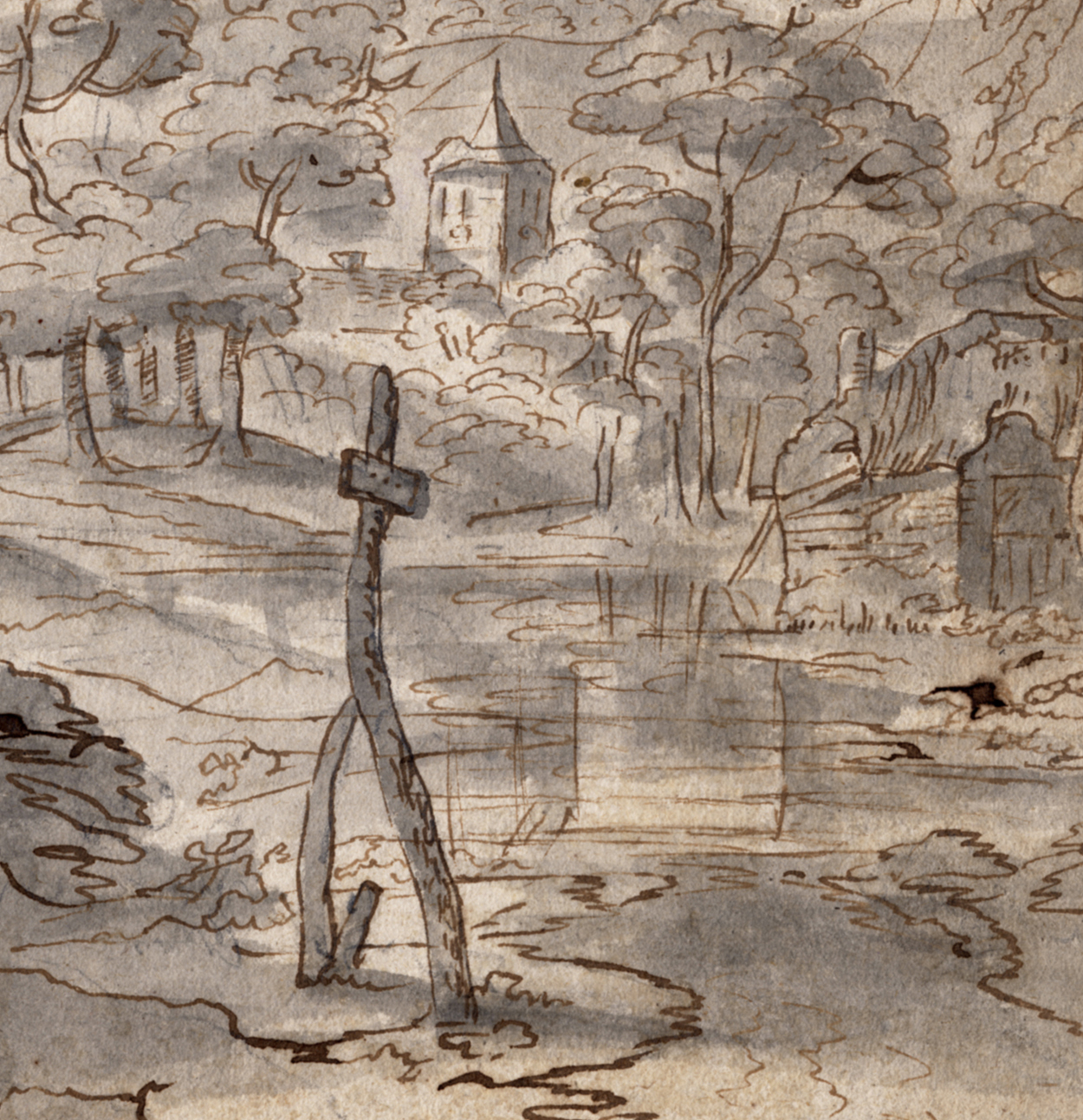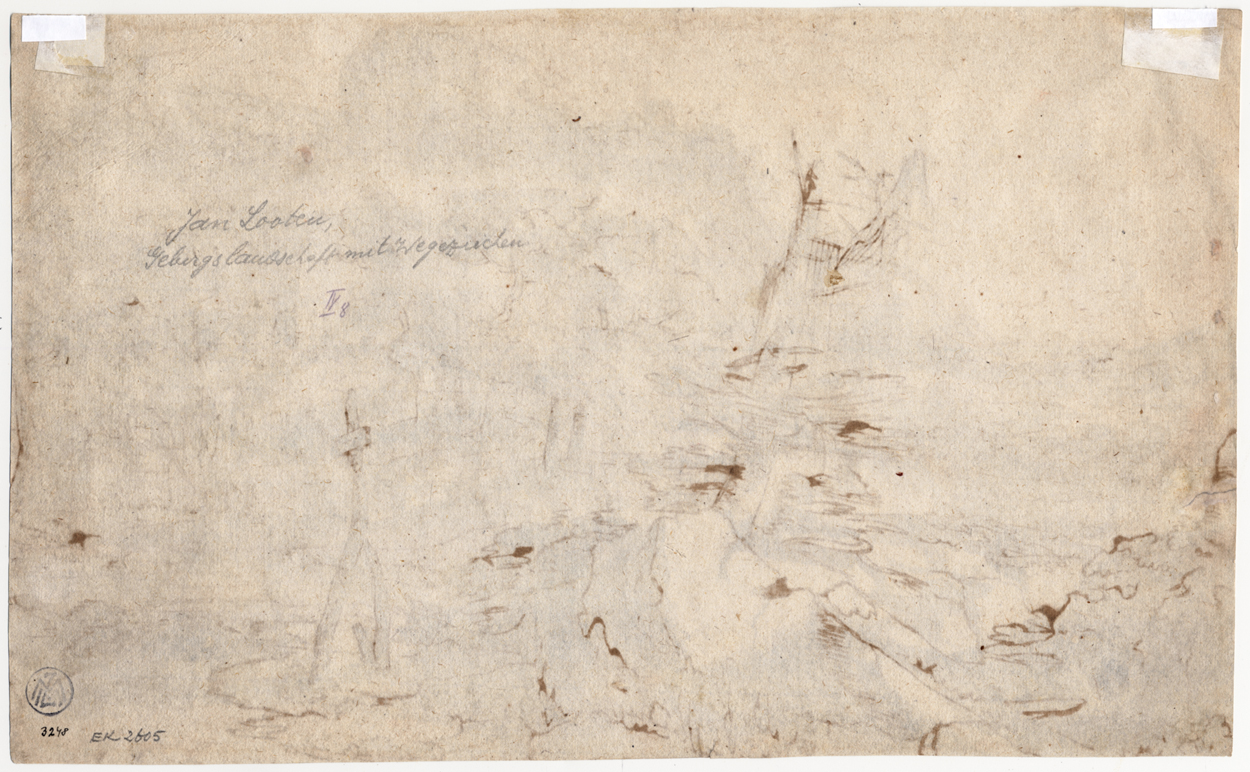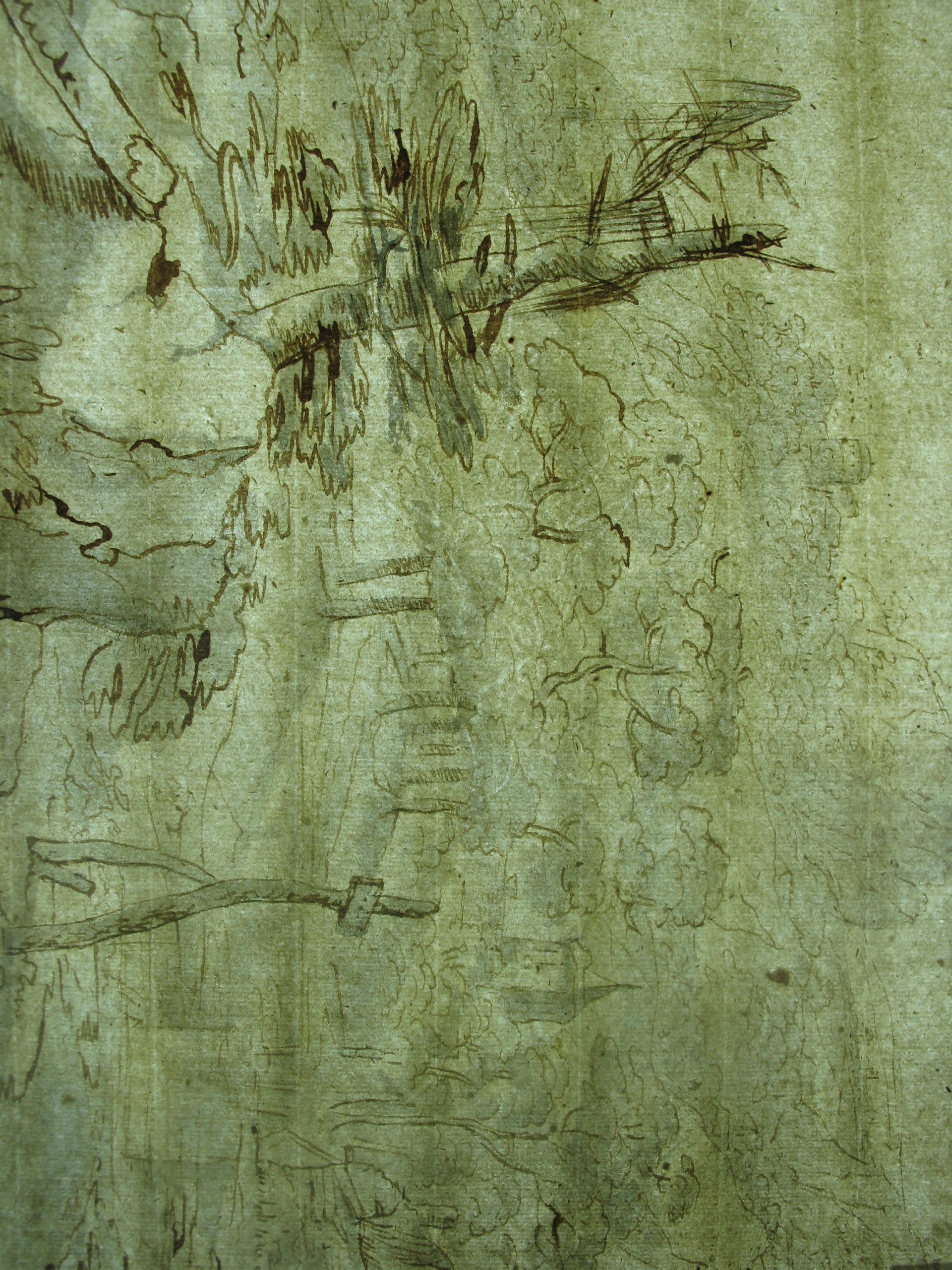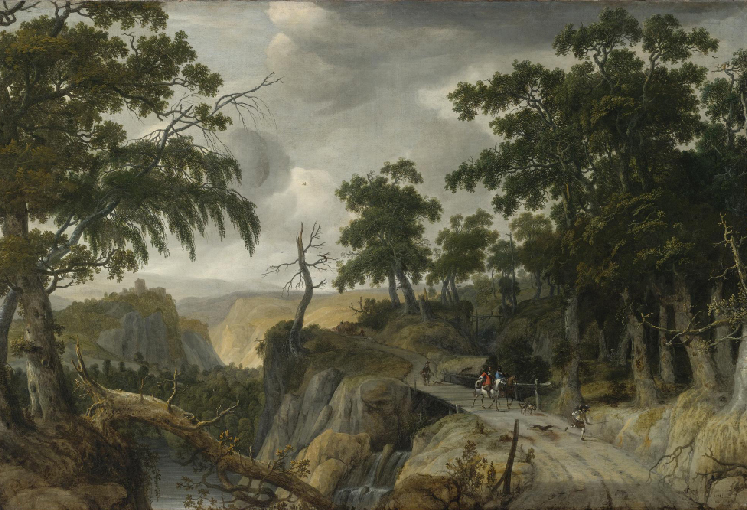JAN LOOTEN (Amsterdam 1618 – 1681 York?)
Jan Looten (Amsterdam 1618 – 1681 York?)
A Wooded Hilly Landscape
Pen and brown ink and grey wash over black chalk, watermark foolscap, 186 x 304 mm (7.3 x 12 inch)
Annotated ‘Ruysdael’ lower right (pencil)
Provenance
~ Dr Arthur Feldmann (1877–1941), Brno, Czechoslovakia
~ Looted by the Gestapo on 15 March 1939
~ Deposited at the Moravian Provincial Museum, Brno in 1941 (inv. no. B3248)
~ Transferred to the Moravská Galerie, Brno in 1962 (inv. no. B3248)
~ Restituted to the heirs of Arthur Feldmann in 2003
- Private collection, Tel Aviv
Exhibited
Holandská kresba 17. století (Dutch 17th-century drawings), Brno (Moravská Galerie), 1954-55, no. 70
Literature
Carlos van Hasselt, Landschapstekeningen van Hollandse Meesters uit de 17e eeuw, exh. cat. Brussels and Rotterdam, 1968-69, pp. 102-03 (as Santvoort)
***
Born and raised in Amsterdam, Looten was a member of the civil militia (‘schutterij’) there in 1642, and his likeness was included in a group portrait by Elias Pickenoy of that year. The artist specialised in wooded landscapes influenced by Cornelis Vroom and Jacob van Ruisdael, although a group of landscapes painted on small copper plates are reminiscent of earlier landscapes in the Flemish manner.
Around 1665 the artist settled in London in expectation of economic improvement. His studio in St James’s Market must have been a starting point for other Dutch painters who crossed the Channel later on in the 1660s. The animal- and landscape painter Jan Griffier (c.1645-1718) who is somewhat better known in England, worked for Looten for a while in the second half of the 1660s. Looten is perhaps best known for being the recipient of a visit by the diarist Samuel Pepys, who visited his studio on 11th April 1669 and was unimpressed by the wares on offer. Pepys was however directed by Looten to the house of the still life painter Simon Verelst, who lived “close by”. The flower pieces by Verelst managed to impress Pepys considerably more. Verelst is described by Pepys as “a painter that was then in the house with him [= Looten]”. This probably means that Verelst was employed as Looten’s assistant at the time. Not much else is known about Looten’s English career apart from the fact that James II owned three of his paintings, which remain in the Royal Collection to this day.
This drawing is one of very few works on paper by the artist.1 A single signed landscape drawing is in the Frits Lugt collection,2 whereas a drawing with an early attribution to Looten is in the Dresden museum.3 Our drawing was published as Looten in the 1954-55 Brno exhibition, but an alternative attribution to Pieter Dircksz Santvoort was suggested by Dr Ann Zwollo some years later. Since then the Looten attribution has been generally accepted. The drawing may be compared to one of Looten’s most magnificent paintings, Rocky Wooded River Landscape, signed and dated 1661 (fig.).4 Both works feature a dead tree in the centre of the composition, with diagonally-placed treetrunks in the foreground, a path winding its way into the distance, and a pole supported by a diagonal beam along it. Our drawing can probably be dated around the same period, very shortly before Looten emigrated to London.
The previous owner, Dr Arthur Feldmann, was a Czech lawyer and built an important collection of drawings during the first half of the 20th century, mainly concentrating on drawings from the Central European school. His collection included around 750 drawings, including works by Hans von Aachen, Lodovico Cardi, il Cigoli, Montalto, and many others.
SOLD
1. RKD artwork number 186928.
2. Graphite, 202 x 305 mm; Fondation Custodia, Paris, inv. no. 2331; Carlos van Hasselt, Landschapstekeningen van Hollandse Meesters uit de 17e eeuw, exh. cat. Brussels and Rotterdam, 1968-69, cat. no. 99, plate 122.
3. Black chalk, grey wash, white heightening, 211 x 295 mm; inv. no. C1869; with early annotation ‘IAN LOO…’.
4. Oil on canvas, 120.7 x 183 cm; Sotheby’s, New York, 5 June 2008, lot 33, repr.
